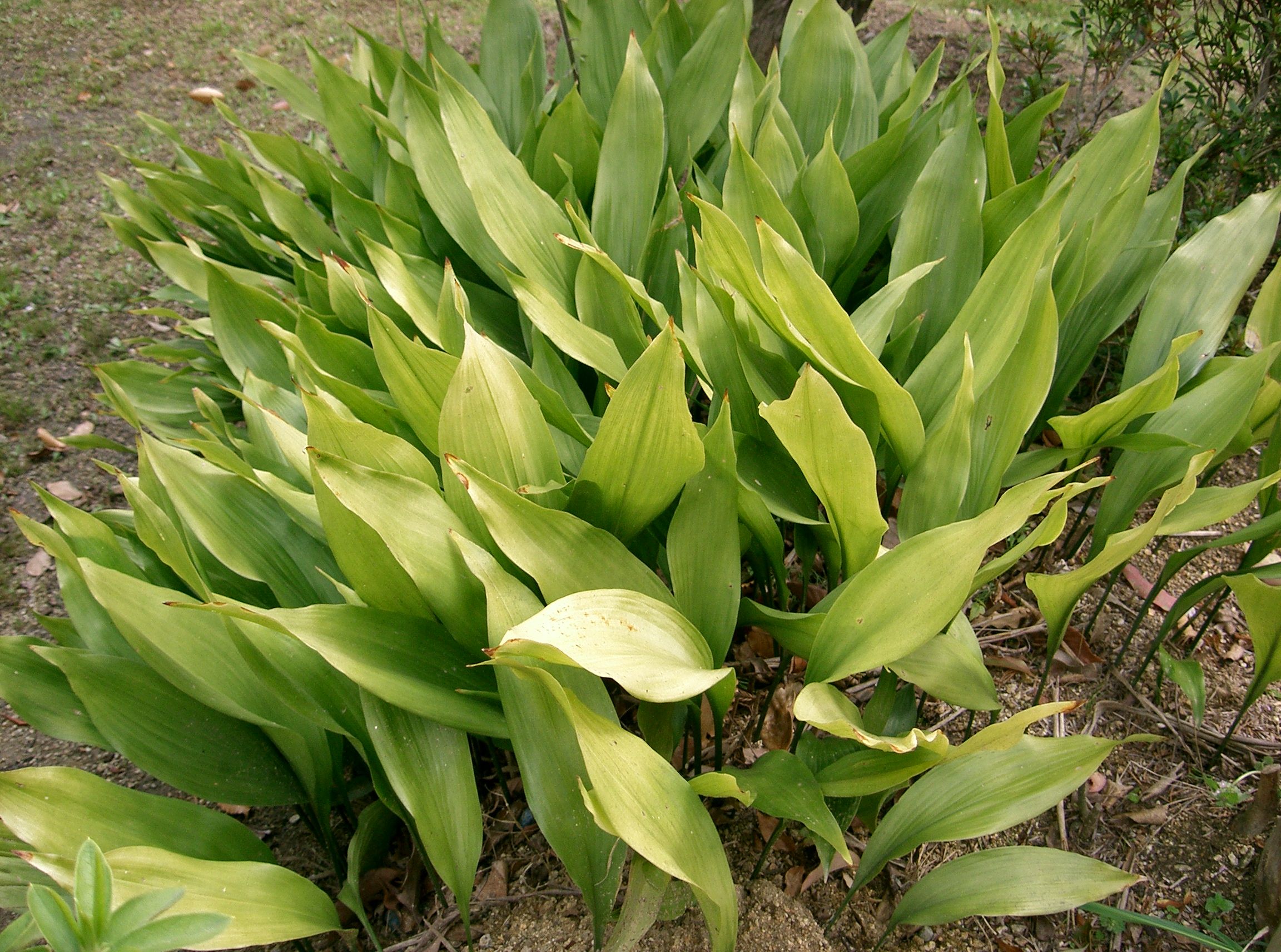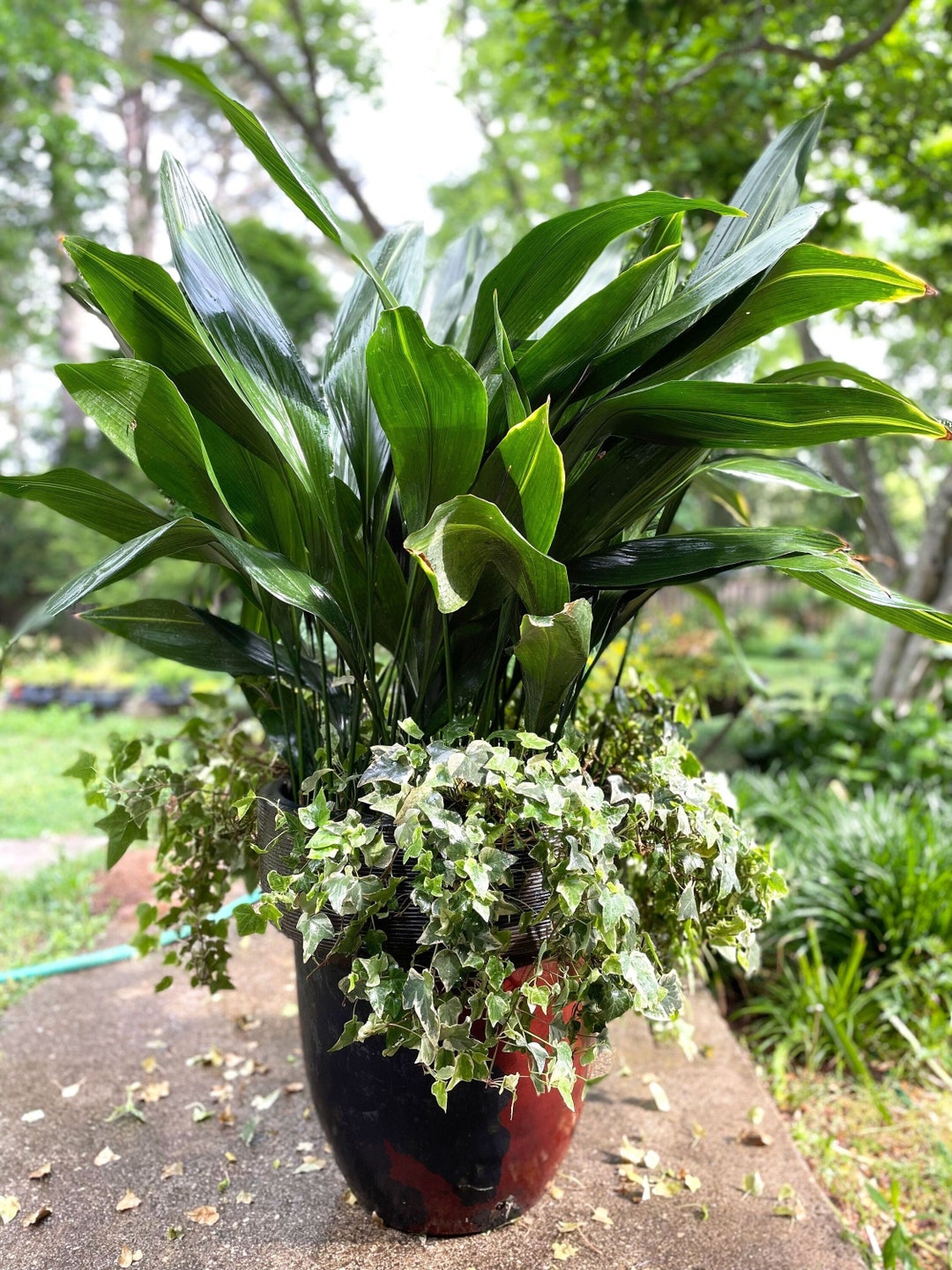The Aspidistra: A Plant of Unassuming Elegance
The Aspidistra, often referred to as the “Cast Iron Plant,” is a remarkable houseplant renowned for its resilience and low-maintenance nature. Its ability to thrive in challenging conditions has earned it a reputation as one of the most forgiving plants for even the most novice of gardeners.
A Botanical Overview

Kingdom: Plantae
The Aspidistra is characterized by its distinctive foliage. Its long, dark green leaves emerge directly from the soil, creating a graceful and elegant appearance. These leaves are leathery and durable, contributing to the plant’s hardy nature. While the Aspidistra is not a flowering plant in the traditional sense, it produces small, inconspicuous flowers that bloom at the base of the leaves. These flowers are often hidden beneath the foliage and may go unnoticed.
A Plant of Many Names
:max_bytes(150000):strip_icc()/grow-cast-iron-plants-aspidistra-1902740-7-b73a4e6f33a84b04aba7303169f4cb9e.jpg)
The Aspidistra has earned a variety of common names, reflecting its unique qualities and historical significance:
Cast Iron Plant: This name highlights the plant’s incredible durability and ability to withstand neglect.
Cultivating the Aspidistra

The Aspidistra is remarkably tolerant of low light conditions. It can thrive in dimly lit corners or rooms with minimal natural light. However, it can also adapt to brighter environments. Ideal temperature ranges for the Aspidistra are between 60°F and 75°F (15°C to 24°C). It can tolerate slightly lower temperatures but may experience growth slowdown in colder conditions.
One of the key factors contributing to the Aspidistra’s popularity is its low water needs. It is highly susceptible to root rot if overwatered. A general rule of thumb is to allow the soil to dry out slightly between waterings. During the winter months, watering can be reduced even further.

The Aspidistra prefers well-draining soil. A mixture of potting soil and perlite or sand can provide optimal drainage. While the plant is not a heavy feeder, it can benefit from occasional fertilization during the growing season. A balanced liquid fertilizer diluted to half strength can be applied every few months.
The Aspidistra can be propagated through division. This method involves carefully separating the plant’s root clump into smaller divisions, each with its own set of leaves. The divisions can then be repotted individually.
The Aspidistra in History and Culture

The Aspidistra has a rich history, dating back to the Victorian era. It was a popular choice for Victorian homes and public spaces due to its ability to thrive in challenging indoor conditions. The plant’s association with Victorian culture is often referenced in literature, such as George Bernard Shaw’s play “Pygmalion.”
In Japanese culture, the Aspidistra holds symbolic significance. It is often associated with perseverance, resilience, and enduring love. The plant’s ability to thrive in difficult circumstances is seen as a metaphor for overcoming challenges and maintaining hope.
The Aspidistra in Modern Interiors
The Aspidistra’s timeless elegance and low-maintenance nature make it a popular choice for modern interior design. Its sleek, minimalist appearance complements a variety of decor styles, from traditional to contemporary. The plant’s ability to tolerate low light conditions makes it ideal for spaces with limited natural light, such as offices, bedrooms, and bathrooms.
The Aspidistra is a versatile and enduring houseplant that has captivated gardeners for centuries. Its resilience, low-maintenance nature, and elegant appearance make it a valuable addition to any home or office. Whether you’re a seasoned plant enthusiast or a beginner, the Aspidistra is a reliable and rewarding choice.
Aspidistra Plant
